 Starlings by Amanda Linsmeier, 2023
Starlings by Amanda Linsmeier, 2023
Recommended for grades 9 and up
Fantasy, horror
Brief Review
After her father’s suicide, seventeen-year-old Katherine “Kit” Starling and her mother go to visit Agatha, the grandmother she’d thought died long ago. Despite her grief, Kit enjoys the quaint town of Rosemont, where her grandmother is treated like a local celebrity and she herself is a guest of honor. But a series of disturbing events, culminating in the disappearance of Kit’s mother and the death of a local teenager, lead Kit to realize that Rosemont has a dark, sinister history and that the woman in her family have had a central role in it. She eventually learns that her distant ancestor Franny Starling made a pact with a monster. He keeps the town safe and prosperous, but in return, every female in the Starling family belongs to him. Kit is supposed to officially give herself to him at the upcoming festival. Now she’s on a tight timeline to figure out how to extricate herself from a promise she never made. With a dark and disturbing plot not-quite-hidden beneath its seemingly cozy and romantic setting, this YA novel falls somewhere between genres and is perfect for readers who like stories about mysterious family secrets. Some readers may choose to interpret the ongoing sacrifice of the Starling women as being a metaphor for generational trauma associated with domestic abuse. Kit’s eventual victory, which seems surprisingly simple after all her efforts to piece together cryptic clues, could be read as a message about consent. Or maybe, the Starling women’s pact is simply an example of the magically-binding-contract trope so common in dark fantasy.
Longer Review
It’s a few days before Christmas, and seventeen-year-old Katherine “Kit” Starling is on her way to her recently deceased father’s hometown of Rosemont, along with her mother. The book’s intriguing opening line, “She was supposed to be dead,” refers to Kit’s paternal grandmother, Agatha Starling. Kit is hoping that this trip will give her some insight into her family history and as to why her father has always lied to her about it. She quickly finds out that the Starling family is very important in the small, quaint, picturesque town of Rosemont. Her father’s childhood home is now a museum, the townspeople talk to Agatha as if they owe her a debt of gratitude, and everywhere Kit goes, people treat her like a guest of honor.
Almost immediately upon her arrival, Kit meets a cute boy named Bear. Like her and her father, Bear is a writer, and Kit quickly bonds with him. Both Agatha and Bear are eager to show Kit around town. Agatha tells Kit about the local festival that will be happening shortly after Kit and her mother leave, and she decides to include Kit by commissioning a special dress for her. She also takes her to Starling House and tells about their distant ancestor Franny Starling, who saved Rosemont from starvation early in its history. Bear shows Kit the famous eternal roses of Rosemont. Despite Kit’s grief at the loss of her father, she is enjoying the ambiance of Rosemont and the company of her newfound grandmother and new friends.
But then one morning, Kit wakes up and finds her mother gone. Mom has texted Kit that she “need[s] some space” and will “be in touch”, but Kit knows her mother wouldn’t just leave. Neither Agatha nor the sheriff feel that Mom is in danger, so Kit takes it upon herself to investigate her mother’s disappearance. But that’s not the only disturbing thing happening in Rosemont. A local girl, just a year younger than Kit, has been found dead in the river that runs through the woods at the edge of town. When Kit goes to search those same woods for her mother, she sees a strange, otherworldly girl trapped in the ground, bound by tree roots. She leads the sheriff to the scene, but the girl isn’t there anymore.
Rosemont no longer seems like a cozy place to spend Christmas. There’s something dark and sinister going on in the town, and Kit realizes that it has something to do with her own family history. Agatha acknowledges this fact and promises to tell Kit the whole story, but that conversation keeps getting delayed. With the help of Bear, Kit breaks into Starling house to look for any clues. At first they don’t find much, but after a dramatic kissing scene in the family portrait gallery, Bear notices some papers hidden in the fireplace. They are journal entries written by the eighteenth-century matriarch Franny Starling herself.
Bear also tells Kit some dark details of the town’s history that she hadn’t previously heard, and between those, Franny’s writings, and Agatha’s story which she finally tells Kit the next day, Kit learns exactly how Franny saved Rosemont. The Starling family has made a pact with a monster. He keeps the town safe and prosperous, but in return, every female in the Starling family belongs to him. Kit is supposed to officially give herself to him at the upcoming festival; the disappearance of her mother was orchestrated to keep her in Rosemont until then. But he has already been interacting with her in ways she couldn’t have guessed. Now Kit is on a tight timeline to figure out how to extricate herself from a promise she never made.
With a dark and disturbing plot not-quite-hidden beneath its seemingly cozy and romantic setting, this YA novel falls somewhere between genres and is perfect for readers who like stories about mysterious family secrets. Some of the plot twists are a little predictable, and the ending felt a little anticlimactic. (Despite the implication that Kit’s predicament could only be solved by painstakingly piecing together clues left behind by her ancestors, the resolution turned out to be completely straightforward) But these potential flaws are easy to overlook because the book is so well-written. The gradual shift from a realistic but vaguely unsettling ambiance to full-blown dark fantasy is so perfectly paced that the story maintains its aura of suspense even without any truly surprising twists and turns.
Although there’s an undertone of sexual connotations in the relationship between the Starling women and Rosemont’s monster, and it is specified that Kit is bisexual, there’s no explicitly sexual content in this book. (At one point, Agatha assures Kit that she isn’t going to have to actually sleep with the monster) Some readers may choose to interpret the ongoing sacrifice of the Starling women as being a metaphor for generational trauma associated with domestic abuse, or for the dangers of equating feminine strength of character with the willingness to make sacrifices rather than the ability to make wise decisions. Kit’s eventual victory over the dark forces that have controlled her family for centuries could be read as an allegory reminding young women that they have the right to refuse sexual advances, or perhaps telling them not to feel compelled to prioritize their family’s expectations over their own hopes and plans. Or maybe, since Kit is shown enjoying books about “the dangerous world of fae”, Franny Starling’s pact is nothing more than an example of the magically-binding-contract trope so common in dark fantasy.
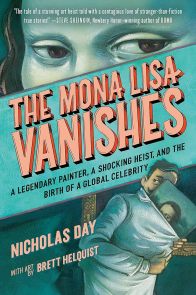 The Mona Lisa Vanishes
The Mona Lisa Vanishes 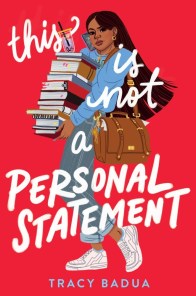 This is Not a Personal Statement
This is Not a Personal Statement  Dead Girls Can’t Tell Secrets
Dead Girls Can’t Tell Secrets 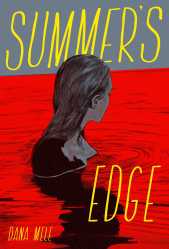 Summer’s Edge
Summer’s Edge 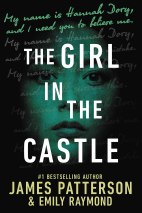 The Girl in the Castle
The Girl in the Castle 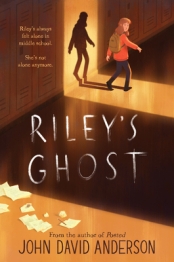 Riley’s Ghost
Riley’s Ghost 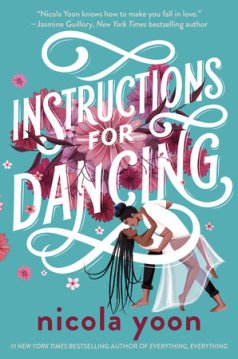 Instructions for Dancing
Instructions for Dancing 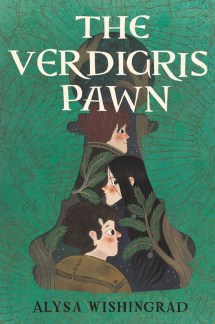 The Verdigris Pawn
The Verdigris Pawn  A Sitting in St. James
A Sitting in St. James 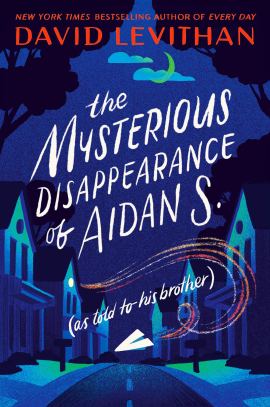 The Disappearance of Aidan S. (as told to his brother)
The Disappearance of Aidan S. (as told to his brother)  Cathedral of Bones
Cathedral of Bones